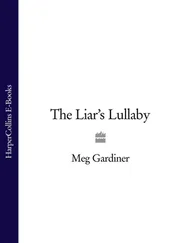By 1933 almost 75 per cent of shipbuilding workers in Scotland were unemployed. Edwin Muir, a poet and novelist born on Orkney whose family had moved to Glasgow, where he had worked as a clerk in a shipyard office, found when he revisited his former workmates that half had been laid off, and those who were still at their desks were on half time (and half pay). All were sunburned, an unwelcome mark then of the un- and underemployed who spent too many hours outside, hanging around, digging allotments, scavenging for coal and wood. ‘The dead on leave’ was how Muir described Britain’s unemployed, borrowing the phrase (‘die Toten auf Urlaub’) from the German socialist Rosa Luxembourg.
It was not until 3 April 1934 that work resumed on No. 534. With a slow upturn in the economy, and concerned for British maritime prestige, particularly with the spectre of the Normandie , the government finally agreed to advance £3 million to complete the work, plus a further £5 million if it was decided to build a sister ship, as had been the original plan. A skirl of bagpipes accompanied the three hundred workers who marched through the gates of John Brown’s shipyard to scour off the tons of accumulated rust on the hulk, displace the colonies of birds nesting there, and resume building. Soon some one thousand men from all over the country were supplying what was needed to complete the liner later that summer.
One of the conditions of the government loan had been that Cunard should merge with White Star Lines, creating a strong British firm to compete for the North Atlantic trade. So-called ‘rationalisation’ was seen as the key to increasing efficiency and productivity, and allaying schemes of nationalisation which would cut a swathe through Britain’s staple industries. It was an au courant term even if no one was quite sure what it meant, and it invariably meant the merger of larger companies, with smaller ones left on the sidelines. The Labour MP for Jarrow, Ellen Wilkinson, wrote of this tendency in the Tyneside shipyards: ‘If the lambs would not lie down with the lions, the lions were ready to co-operate together to make certain of their victims later.’ Such mergers meant that by 1937 twenty-eight British shipyards, with a total capacity of over a million tons, had been put out of business. The men thus displaced were unlikely to be absorbed into other industries. Until 1938 the highest rates of unemployment in any British industry were in shipbuilding: not just along the Clyde, but in Belfast, the North-East of England and on Merseyside too. When Palmer’s shipyard closed in 1932, ‘Jarrow was utterly stagnant. There was no work. No one had a job except a few railway officials, and workers in the co-operative stores, and the few clerks and craftsmen who went out of town to their jobs each day.’ Across the country 60 per cent of those who had worked building or repairing ships were unemployed, compared to an average unemployment rate of around 22 per cent.
But the decay of Britain’s staple traditional industries, on which the country’s nineteenth-century prosperity had been based, was not confined to shipbuilding. Coal, iron, steel, heavy engineering and cotton accounted for more than 40 per cent of total unemployment, and in areas where they were concentrated — Teesside, South Wales and Monmouthshire, Tyneside, Cumberland, Lowland Scotland and Lancashire — the unemployment figure was much higher than the average: in some cases staggeringly high. In July 1931 Jarrow’s employment exchange reported that 72.6 per cent of its workforce was unemployed, and in Ferndale in the Rhondda Valleys, 96.5 of those in jobs covered by insurance contributions from workers, employers and the government were out of work. In the worst of times — 1932 — nearly a third of all coalminers were unemployed, and even in 1936, when the economy was in upswing, a quarter of all coalminers were still without work, as were almost a third of iron and steelworkers.
‘Everybody knows that there are at present in England prosperous districts and “depressed areas”,’ explained Men Without Work , a report from the Pilgrim Trust, which had been established in 1930 under the chairmanship of Stanley Baldwin with a £2 million gift from Edward Harkness, an American philanthropist who had inherited a vast oil fortune and who, proud that his ancestors came from Dumfries, took a most munificent interest in Britain, its society and culture, at a time when his own country was also in the throes of a deep depression.
The ‘prosperous districts’ were to be found mainly in the Midlands and the South of England: ‘a line from the Severn to the Wash’ was generally recognised as roughly delineating the areas of prosperity from those of ‘distress’. Although the Yorkshire novelist and playwright J.B. Priestley famously came across three rather than two ‘Englands’ in his ‘rambling but truthful account of what one man saw and heard and felt and thought during a journey through England during the autumn of the year 1933’, he reported finding prosperity in only two of these. It was apparent in much of the first, ‘Old England, the country of cathedrals and minsters, of manor houses and inns, of Parson and Squire; guide-book and quaint highways and by ways England’, the Cotswolds, parts of rural ‘middle England’, most of Southern England, and also in the third, ‘the new post-war England … of arterial and by-pass roads, of filling stations and factories that look like exhibition buildings … all glass and white tiles and chromium plate … of giant dance-halls and cafés, bungalows with tiny garages’. It was largely in ‘new post-war England’ around London and in the Midlands — Leicester ‘claims to be the most prosperous city in England’ — that the new industries were located. Indeed, they and the lifestyles they engendered defined Priestley’s somewhat scornful characterisation, since he did not much care for the ‘third England’ he had happened across, with its ‘depressing monotony’, its ‘trumpery imitation of something not very good in the original’ (that is, ‘American influence’) and its general ‘Woolworths culture’ of cheapness — and, he admitted, accessibility — defined by money.
Such recently established and expanding industries as light engineering, artificial-textile and motor-vehicle manufacture, electrical goods (the national grid, which was completed in 1933, provided a stimulus for the manufacture of electrically-powered domestic appliances such as radios, cookers, vacuum cleaners, gramophones and electric irons) were invariably smaller-scale than the old industrial giants, and often a number of diverse enterprises were located in one place, each employing fewer people, but less vulnerable to the vagaries of world trade, particularly as many were producing goods primarily for the home market, and were concentrated where that market was dense.
However, in the depressed regions the most deeply disquieting fact was not just the number of unwilling conscripts into the army of the unemployed — an estimated nearly three and a half million in total in 1932, at the deepest trough of the Depression — and their concentration in certain areas: it was the length of time some of them had been without a job. Long-term unemployment was defined as having been out of work for more than a year. In September 1929 about 45,000 were in that category; by August 1932 the number had risen to 400,000, or over 16 per cent of the unemployed workforce. In Crook, in County Durham, 71 per cent of the unemployed had been without a job for five years or more, while the figure for the Rhondda Valley in South Wales was 41 per cent, and for Liverpool 23 per cent. Even in a generally prosperous city such as York, where the overall rate of unemployment was relatively low, Seebohm Rowntree’s 1935 survey found that 21.9 per cent of unemployed heads of families had been out of work for between two and four years, 23.6 per cent for four to six years, and 17.9 per cent for over six.
Читать дальше












